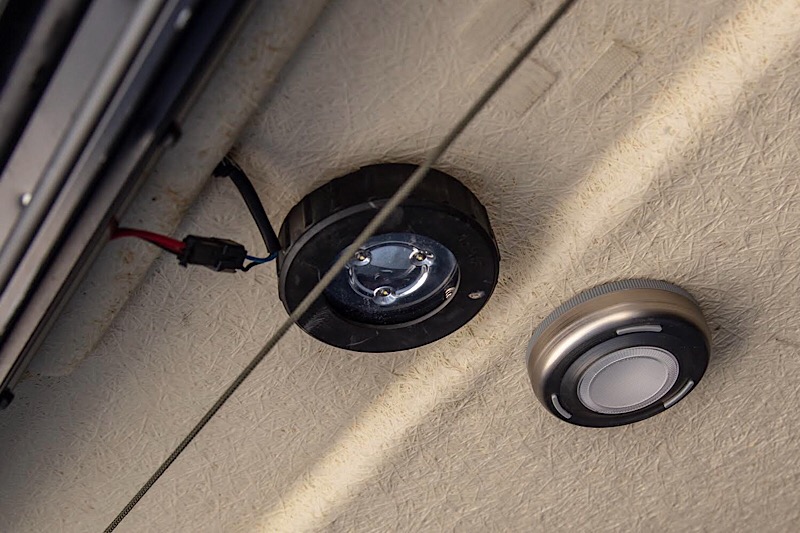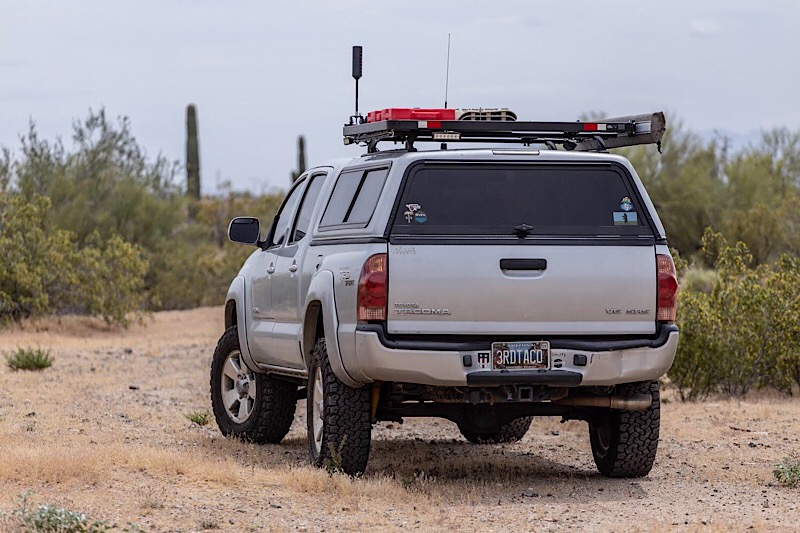Overland travel with what you need and nothing you don’t
While camping and offroading have been a pastime in American culture for as long as most of us can remember, the last decade has seen an explosion in the popularity of overland vehicles. And as someone new discovers this community, they start to see examples of the depth and complexity some vehicles are taken to. It’s fun to daydream about crossing some beautiful remote landscape in a fully built, expedition grade vehicle, but it can be a little intimidating once you start to see price tags on popular vehicles, gear, components, and systems.
Starting with a 2006 Toyota Tacoma DoubleCab Long Bed TRD Sport, I’ve tried to build a budget-friendly adventure vehicle that can handle the tasks I throw at it, while not going too far overboard. The common mindset in the outdoor adventure/overland world is being able to tackle whatever comes your way, and while it’s a comforting concept and an admirable goal, it can get easily out of hand. My adventures tend to stay in the Western United States, most notably in the deserts and forests of my native state of Arizona. I’ve done several multi-week, multi-state trips, taking as many side roads and backcountry byways as I could, but I’m often just heading a couple of hours out to a remote spot to catch a meteor shower, do some outdoor product photography, or just clear my head and get a little R&R in.
As with any adventure vehicle you’ve had for 14 years, the list of upgrades, modifications, additions, and alterations is longer and more complicated than most reader’s attention spans- I’ll cover the major things that have made the most difference.
Mechanically, this truck is mostly stock. I have nearly 180,000 miles on the odometer, and outside of required maintenance, I’ve had to replace one drive shaft carrier bearing, and one alternator. Years ago I had an Old Man Emu suspension kit installed, the standard weight coils as I lack a winch, and Dakar rear spring packs. After it settled, the truck gained about 2″ of height but handled dirt roads and heavier loads much better. I’ve still got stock TRD Sport wheels, wrapped in 265/70R17 BFG All Terrain KO2 tires. I’ve had three Tacomas, spanning almost 25 years, and I’ve had some generation of BFG AT on them almost the entire time.
I bought the Double Cab because no matter which one of my career paths I’m following for the week, I have a lot of gear that goes with me. I bought the Long Bed, as I knew I was going to be putting a shell on it and sleeping in the back. I stand exactly 6 feet tall, and I’m perfectly happy with the space. I bought an ARE CX series shell, and had Yakima rails installed. As I eventually added a Front Runner Outfitters Slimline II tray by modifying Front Runner mounting plates to agree with Yakima crossbars, I’d probably been better off researching mounting solutions more thoroughly from the beginning, but it works without complaint. The rack has a 4-gallon Rotopax, TRED4x4 traction planks, and a Front Runner Awning attached. It’s also host to a WeBoost OTR Antenna. This truck lives in a garage, and I mounted the antenna on a Rhino Rack hinge meant for antennas and aerial flags you see at the dunes. It lets me drop the 18″ tall antenna when not in use and just barely fit though my standard 7-foot-tall garage door.
Inside the shell, I have two layers of memory foam, wrapped in a panel of fairly soft outdoor rated carpet. It’s all one piece, and sort of looks like a homegrown mattress. Certainly makes it easy to pull it out if I’m moving cargo that needs the space. I have a Mr. Heater Little Buddy mounted to the bed rails, and run it from a small Coleman twin tank caddy that holds a pair of green 1 pound tanks. A single tank gives me 5-6 hours or so, and it’s not fun to wake up at 3AM to change a tank when the chill has soaked in. I have a carbon monoxide detector mounted inside as well, but catalytic heaters don’t really create CO unless they’re malfunctioning. Still, I’ve always got a window vented when I’m using it, mainly for humidity control. Depending on how many windows are vented, and how much, this tends to keep the interior between 30-60 degrees warmer than the outside climate.
As for electrical and electronics, I’ve always run an upgraded AGM battery, at the moment I’m using a Batteries Plus X2 Power (appears to be an Odyssey clone). I’ve installed a Midland MXT275 GMRS radio, and a WeBoost 4G-X cellular booster. I have two antennas for the GMRS radio, a 6″ that lives up there full time, and a 24″ that gives me greater range when I’m remote. The WeBoost 4G-X booster has been critical as an IT professional. It’s no placebo, on/off speed tests have show tremendous throughput, I’ve had bandwidth to spare nearly everywhere I go. Other electronics include 3 no-name 1200 lumen LED fog lights, pushed into area lighting duty mounted on the underside of the Front Runner tray. One on each side, and one to the rear. They’re wired so that I can power these on from the driver’s seat, or from inside the shell. Interior lighting on the shell is handled by a couple of pairs of inexpensive AA powered push lights, VHB taped to the ceiling at the front and rear. I prefer that these lights are kept out of the vehicle’s electrical grid, I don’t want to kill the truck’s battery because I left the light on.
Dual Batteries are a common upgrade, and rightfully so. My 2006 TRD Sport has the ABS manifold on the passenger side fender area where most put their second battery. I know there are other mounting locations, but I went simpler and chose a NOCO Genius Boost GB150 jumper box. 4000 amps is overkill to jump my 4.0L V6, but it’s been enough to jump a couple Ford PowerStroke’s over the years, something a second battery may have struggled with.
All in, this modification list has cost me less than $10,000, spread out over more than a decade. There are countless other little additions and personal tweaks throughout the truck, but these main upgrades have given me the freedom to work and play, my way, wherever I go. I hope this list can help you set off on your own adventures.
OutdoorX4 Magazine – Promoting responsible vehicle-based adventure travel and outdoors adventure
















